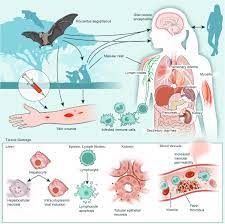Researchers from an international team have uncovered previously unknown complexities in celiac disease, an autoimmune disorder triggered by gluten, potentially paving the way for more effective treatments.
Celiac disease, which affects approximately 1% of the global population, is caused by an immune reaction to gluten, a protein found in wheat, rye, and barley. Until now, the inflammatory response to gluten was primarily believed to occur within the gut wall, involving only immune cells. However, a groundbreaking study led by researchers from Canada, the United States, Australia, and Argentina has challenged this traditional understanding, revealing that the disease’s mechanism is far more intricate than previously thought.
The research team, spearheaded by McMaster University in Canada, has shown that the inner lining of the upper intestine, known as the “epithelium,” plays a pivotal role in directing the inflammatory response to gluten. This epithelium is composed of a variety of cells that are not typically part of the immune system. This discovery marks a significant shift in the understanding of celiac disease, suggesting that these epithelial cells actively contribute to the immune system’s response, rather than serving as passive barriers.
To explore this novel aspect of celiac disease, the researchers developed an innovative biologically functional model of the intestinal epithelium using microscopic biomaterials. This model, created in a controlled laboratory setting, allowed the team to isolate and observe specific molecular interactions within the epithelial cells of individuals with celiac disease. Such detailed observations are challenging to obtain from living organisms due to the complexity of the body’s internal environment.
Through this model, the researchers observed how the epithelium communicates with immune cells, alerting them to the presence of gluten and confirming the epithelium’s crucial role in activating the immune system in celiac disease. This breakthrough is expected to drive the development of new drugs that target the epithelium’s role in the immune response, offering renewed hope for more effective treatments.
Currently, the only treatment available for celiac disease is a strict gluten-free diet. However, adhering to such a diet is challenging and often insufficient, as even trace amounts of gluten can trigger painful gut symptoms, nutrient absorption issues, and long-term health risks for those affected by the disorder.
“The only current treatment is a strict gluten-free diet, which is difficult and often insufficient,” said Professor Elena Verdu, director of McMaster’s Farncombe Family Digestive Health Research Institute and a lead author of the study. “This discovery could lead to newer breakthroughs in treating celiac disease by targeting the epithelial cells involved in the immune response.”
The study’s findings could potentially revolutionize the management of celiac disease, offering new avenues for research and the development of targeted therapies. As the prevalence of celiac disease has doubled over the past 25 years, these advancements could significantly improve the quality of life for millions of individuals worldwide who currently struggle to manage their condition.
This research underscores the importance of re-evaluating established scientific paradigms and the potential for innovative models to uncover hidden complexities in diseases, leading to more effective and targeted treatments. The study is a beacon of hope for those living with celiac disease, signaling a future where more advanced therapeutic options may finally be within reach.











